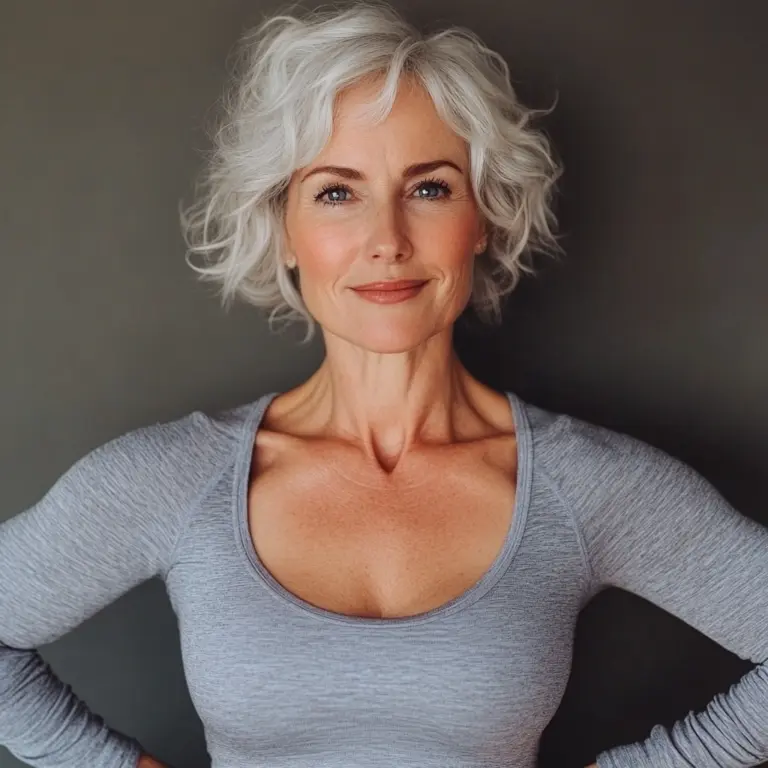Why Rest Days Matter More After 50 for Optimal Health and Fitness
If you’re over 50, you might wonder why rest days…
If you’re over 50, you might wonder why rest days are so crucial. It’s because your body needs more time to recover, repair muscles, and prevent injuries. As we age, our recovery slows, making rest days essential. This article dives into why rest days matter more after 50 and offers guidance on maximizing your fitness routine.
Introduction to Physical Activity for Older Adults
Staying active as we age is one of the most effective ways to maintain independence, boost heart health, and enjoy a higher quality of life. For older adults, incorporating a variety of exercises—such as strength training, brisk walking, and racquet sports—can deliver significant health benefits. These activities not only help improve bone density and muscle mass but also lower the risk of heart disease and Alzheimer’s disease.
A well-rounded exercise program should include both challenging workouts and scheduled rest days. Adequate rest is essential for allowing the body to recover, reducing the risk of injury, and helping you reach your fitness goals safely. Whether you’re new to exercise or looking to update your routine, it’s important to listen to your body and give yourself enough rest between sessions.
Before starting any new exercise program, especially if you have medical conditions or concerns, consult with your healthcare provider. They can help you design a training plan that fits your needs and supports your long-term health. By balancing physical activity with proper rest, older adults can enjoy the many benefits of exercise throughout life.
Key Takeaways
- Adequate rest is crucial for older adults as it aids muscle recovery, prevents injury, and supports overall health.
- Active recovery, including light physical activities, enhances muscle repair without causing additional strain on the body.
- Proper nutrition and hydration are essential for effective recovery, particularly for replenishing energy and supporting muscle health post-exercise.
The Importance of Adequate Rest for Aging Bodies

Our bodies undergo significant physiological changes as we age, necessitating longer recovery times. Older adults often require extended periods of rest period due to decreased resilience in their bodies. These changes mean that muscle repair processes slow down, making rest essential for preventing stagnation or even regression in exercise gains.
Quality rest, particularly sleep, becomes increasingly vital for maintaining both physical and mental health as we age. Sleep is when the body undertakes critical repair and muscle growth processes. Inadequate rest can lead to a slowdown in exercise gains and increase the risk of injuries, making it harder to achieve and maintain fitness goals and greater rest.
Furthermore, sleep disturbances, which become more common with age, can contribute to inflammation and other health risks. Many older adults get less sleep as they age, and sleeping less can further hinder recovery and negatively impact overall well-being. Getting enough rest is not just about avoiding fatigue; it allows our bodies the necessary time to recover and repair, thus helping us live longer and healthier lives.
How Rest Days Promote Muscle Growth and Repair
Rest days and recovery days are not just a break from your workout routine; they are a critical component of muscle growth and repair. After strength training or any intense physical activity, the body needs time to repair and strengthen itself to build muscle. This is even more crucial for older adults, who may require longer recovery periods compared to their younger counterparts. A rest day is essential for optimal recovery, especially after weight training.
Failing to allow sufficient recovery can lead to chronic muscle soreness and hinder overall performance. To optimize training and prevent injury:
- Designate rest days in your training schedule to prevent overtraining and reduce injury risk.
- Give each muscle group adequate rest before exercising them again.
- Avoid hitting the same muscle group on consecutive days. Optimal muscle growth requires following these rest principles.
Active recovery activities, such as light walking or cycling, can enhance blood circulation and aid in muscle repair. Research shows a structured approach to rest, known as periodization, involves alternating intense training with planned recovery periods. Finding the sweet spot for rest between workouts is key, as the optimal amount of recovery time varies for each individual and workout type. These strategies ensure that your muscles have the time they need to recover and adapt, leading to improve strength and overall fitness.

Balancing Exercise and Rest for Optimal Health
Balancing exercise and rest is essential for maintaining optimal health, especially as we age. As we age, adequate rest becomes increasingly important for recovery and injury prevention. Older adults should aim for at least two rest days per week to enable musculoskeletal recovery.
One effective strategy is to alternate high-intensity exercise days with low-intensity ones, ensuring a balanced diet approach to tough workout routines and recovery. This approach not only helps in preventing overtraining but also ensures that the body gets enough rest to recover from more strenuous activities.
Even on rest days, maintaining some form of physical activity supports overall health. Activities like brisk walking, using light weights, engaging in racquet sports, or even play sports can keep the body active without overtaxing it. This balance of exercise and rest is crucial for achieving long-term fitness goals and sustaining a healthy lifestyle.
Recognizing Signs You Need More Rest

Recognizing when to take a break is just as crucial as knowing when to push yourself. Persistent fatigue indicates that your body may need more recovery time, especially with regular physical activity like running. While consistent training is important for progress, it must be balanced with adequate rest to avoid overtraining and burnout. If muscle soreness persists beyond the typical recovery timeframe, it’s a sign that additional rest is necessary.
A noticeable decrease in motivation to run or train signals that your body is overworked and needs more rest. Feeling less enthusiastic about workouts or experiencing mood changes can indicate your body needs more rest.
An elevated resting heart rate suggests that your body is under stress and requires more recovery time. Listening to these signals can help you adjust your routine to incorporate more rest and recovery, ultimately leading to better performance and overall heart health.
Active Recovery: An Alternative to Complete Rest
Active recovery, involving light movement rather than total inactivity, is an excellent alternative to complete rest. Common active recovery activities include:
- Yoga
- Swimming
- Walking
- Riding a bike
Exercises that use your own body weight, such as push ups, are also effective options for building strength and flexibility without the need for equipment.
These activities keep the whole body moving and promote body weight progress in life while maintaining a good balance without placing too much strain on it.
Enhancing blood flow and aiding muscle recovery, active recovery is crucial after intense workouts. This gentle movement helps alleviate muscle tightness and soreness, promoting overall recovery and reducing the risk of injury.
Foam rollers during active recovery can further alleviate muscle tightness and soreness. By incorporating active recovery into your routine, you can meet your recovery needs while still engaging in physical activity, ensuring that you remain on track with your fitness goals.
Nutrition’s Role in Recovery
Proper nutrition is crucial for replenishing energy and supporting muscle recovery post-workout. Staying hydrated is crucial for recovery, especially since older adults may not sense thirst as effectively. Good nutrition and hydration replace fluids and electrolytes lost through sweat, supporting overall recovery and muscle function.
Replenishing glycogen stores depleted during exercise is essential for muscle recovery and preparing for future workouts. Consuming protein and complex carbohydrates shortly after exercise can enhance muscle protein synthesis, promoting faster recovery.
Incorporating functional foods like tart cherry juice can help reduce inflammation and support muscle recovery post-exercise. Key components that play significant roles in recovery include:
- Antioxidants: reduce oxidative stress
- BCAAs: support muscle recovery
- Probiotics: enhance nutrient absorption
- Prebiotics: support overall recovery
Adjusting Your Exercise Plan Over 50
As we age, it becomes essential to adjust our exercise plans to accommodate the body’s changing needs. Rest days should be included to facilitate recovery and accommodate slower muscle repair in older adults. Incorporating light weights or resistance bands into strengthening exercises can promote muscle health without excessive strain. Going to the gym can also provide access to a variety of strength training equipment and structured workouts for older adults.
Moderate cardio activity is recommended for at least 150 minutes per week, ideally spread over three days or more with sessions of a minimum of 10 minutes. For those returning to exercise or starting a new routine, it is advisable to begin with shorter durations and gradually increase, along with considering low-impact activities like walking.
Adjusting your exercise plan to include adequate rest and appropriate activities helps achieve fitness goals while minimizing injury and overtraining risks.
The Role of Rest in Living Longer
Rest is a powerful tool for living a longer, healthier life—especially as we get older. When you exercise, your muscles experience tiny tears that need time to heal and grow stronger. Without enough rest, your body can’t fully repair itself, leading to muscle soreness, fatigue, and a drop in motivation. Over time, this can increase your risk of injuries and even contribute to chronic health issues like high blood pressure and heart disease.
Incorporating regular rest days and active recovery into your routine is key. Gentle activities such as using light weights, resistance bands, or stretching can help your muscles recover without overloading them. This approach not only supports muscle growth and repair but also helps manage blood pressure and keeps you feeling energized for your next workout.
A balanced diet rich in complex carbohydrates, lean protein, and healthy fats further aids muscle repair and overall recovery. By prioritizing rest and recovery alongside your exercise routine, you give your body the support it needs to stay strong, flexible, and resilient. For older adults, this balanced approach can lead to better health, fewer injuries, and a lower risk of chronic diseases—helping you stay active and motivated for years to come.
Benefits of Quality Rest for Mental Health

Quality rest does not only benefit the body; it also has significant mental health benefits. Better sleep quality can reduce symptoms of depression and anxiety. Better sleep correlates with lower levels of stress, rumination, and other mental health difficulties.
Mood changes, such as increased irritability or feelings of depression, indicate a need for rest. Poor appetite or sleep disturbances can indicate an overworked nervous system needing a break, which may also lead to pain.
Good sleep quality is vital for recovery, as it allows the body to repair itself and recover from workouts. Better sleep improves overall well-being and enhances motivation for maintaining fitness and health goals. Prioritizing quality rest can thus significantly improve both physical and mental health.
Consulting Healthcare Providers
For older adults, consulting a healthcare provider is crucial for tailoring rest and exercise plans to individual health needs. General practitioners (GPs) can:
- Provide tailored exercise plans
- Prescribe specific physical activity measures
- Connect patients with local health and exercise programs, ensuring activities are suitable for their conditions.
Using health apps and digital tools can help GPs motivate older patients to maintain regular physical activity guidelines. By seeking professional advice, older adults can safely engage in exercise and rest routines that promote optimal health and lower risk.
Summary
In summary, rest days are essential for maintaining optimal health and fitness, especially for those over 50. Adequate rest promotes muscle growth and repair, balances exercise and rest, and supports mental health. Recognizing the signs of needing more rest, incorporating active recovery, and ensuring proper nutrition play crucial roles in recovery. Consulting healthcare providers can help tailor exercise plans to individual needs. Prioritizing rest and recovery will help you achieve your fitness goals and lead a healthier, more fulfilling life.





